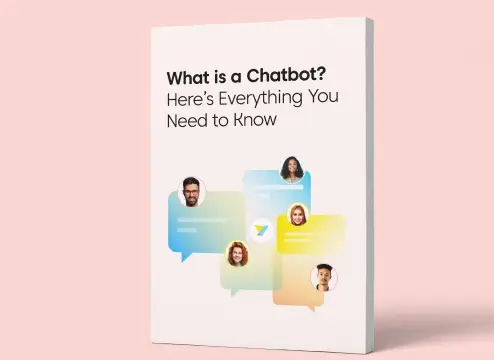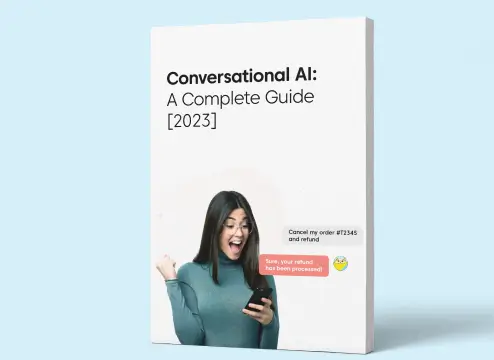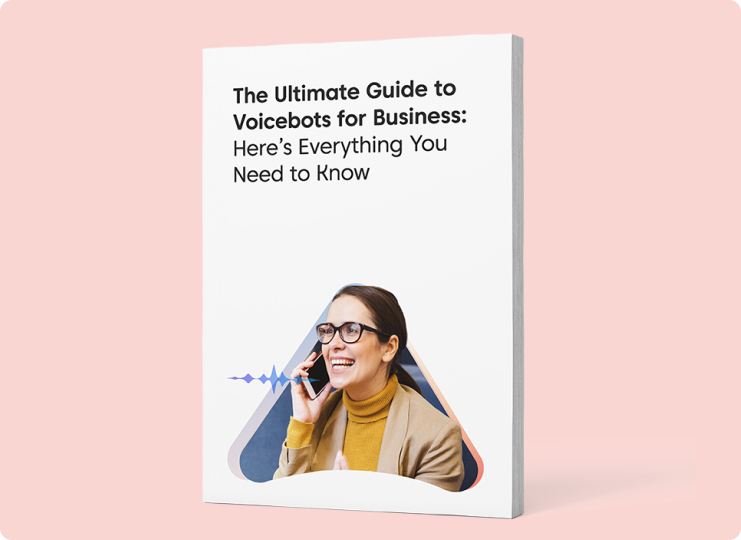With the advent of virtual assistants like Alexa and Siri in every household, Conversational AI simplifies a lot of everyday actions: from adjusting the thermostat, programming the robot cleaner to tidy the house, setting alarms, to downloading bank account statements, just to give a few everyday examples. It no longer surprises anyone if you book your Uber cab by just talking to a bot assistant: by text or by voice. Voilà, Conversation Design has become a much sought-after niche skill in the botverse.
While seamless communication with chatbots and voice bots is the goal, it takes a team of real experts to translate everyday conversation into Machine Language – something that the bot can recognize and respond to in real-time. And here is where Conversation Design Specialists play a vital role.
What is Conversation Design?
Conversation Design is the design of the interaction flow of “conversation” between a Dynamic AI agent chatbot and an end-user based on how real people communicate in life. End users will not need any special skills to ‘talk’ with these bots. They interact with bots just like they would with other people. With conversational experiences existing across platforms and devices from mobile to web to smart speakers and smart TVs, the spectrum extends from voice-only to voice-forward to intermodal and more.
Get Your Free Template
For instance, the way you would ask for directions to the nearby gas station differs if you’re talking to your Google Home versus asking Google Assistant on your phone, as on the latter the results can be displayed on the screen. Approaching Conversation Design with a cross-platform methodology is important when considering the range of possible devices and use cases you want to accommodate.
3 reasons brands need Conversation Design
Every business is unique and caters to different clientele. If you want your business to leverage the power of Conversational AI, the bot assumes the all-encompassing roles of your best performing sales guy, marketing powerhouse, front desk resource, brand manager, all rolled into one. You can tailor your bot persona to reflect your brand image to everyone who lands on your page.
- Training the bot is totally within your control and it only says what you want it to say. It doesn’t take a day off and doesn’t miss leads ever. Efficiency is its middle name, and it handles irate customers like a boss! Sounds too good to be true? It almost is!
- CD ensures that the bot handles multiple users in a friendly, efficient manner all at the same time, something a human can never do! It handles key points of the user-bot interaction. A good bot is one that has its conversation design in place and can respond in a thoroughly satisfactory manner just like a live agent would.
- The training that you can give your bot would be to field questions efficiently, manage queries it doesn’t understand gracefully, without being repetitive or annoying and know exactly when it has to hand off to a live agent when it can sort out the issue at hand.
Key features of Conversation Design
It can be tempting to simply go off and start designing your bot (sometimes, that’s not a bad place to start), but it could be useful to understand these 3 key aspects of Conversation Design –
- Cooperation: The underlying principle for a successful interaction between the bot and the user is the need to be cooperative in nature. To delve into this a bit deeper, it is to understand the intent behind seemingly innocuous statements. This is called Conversational Implicature and forms the cornerstone of a successful Conversation Design.
Eg. When a user types, “I’m hungry” to a bot, he expects to be told the nearby restaurants and not for the bot to say instead “Ok, so eat.”
- Turn-taking: Ever noticed how some bots keep sending lengthy introductory messages without expecting any responses from the user?
It becomes annoying and lonely, pretty soon and loses the interest of the user. It is important to realize that the key aspect of Conversation Design and the bot in turn is to interact with the user. So, make your conversations interactive! Make them personal by recognizing your users and their choices from previous visits. This makes the conversation interactive, memorable, and delightful.
- Context: We spoke about intent. Context is the other side of the coin. Most people are still new at talking to machines. In order to make the conversation feel natural, we need to focus on the user’s physical and emotional context and the kinds of conversations that can serve them in that context. For eg., for a user on the go using a mobile device, your questions and need for answers should be short and to the point.
Ultimately, Conversation Design requires the collaboration of several design disciplines, including voice user interface design, interaction design, visual design, motion design, audio design, UX design, and writing. The designer builds the architecture of what the intended users can do in the space, keeping in mind the AI platform’s capabilities, the user’s needs and finally, the technical feasibility.

Benefits of Conversation Design
- Retains Target Audience: Good conversation creates good memories, in the mind of your users, which in turn creates a positive emotional draw towards your products or services. Better customer experiences result in more repeat customers.
- Reduces bounce and improves CSAT: When your bot behaves like a human, the chances of the users getting annoyed are extremely slim. This in turn reduces bounce rates and improves CSAT scores.
- Optimizes Bandwidth: for your agents, of course! With lesser deflection from the bots, the live agent support is freed for more complex query resolution and can use their time more efficiently.
- Drives Conversions: The more customers you attract, the more people will engage with your brand and products. Having a well-designed, interactive conversation design will push your target audience to take action.
- Builds Loyalty: Richer conversations, targeted advertising, and a much greater degree of personalization builds your brand’s image in terms of recall and return. Conversation design is key to engaging your audience with memorable interactions to build rapport.
Get started with Conversation Design
A conversation can be designed to go in so many different directions based on the goals of the brand. For eg., if a skincare brand wanted to push a new product to their users, the conversation between the bot and the user should be designed such that it gives recommendations for skin types or concerns that will push the product.
Here are some of the considerations that go into making a successful Conversation Design:
- Know Your Customer: Identify the motto of the brand, its tone, target audience, customer personas, and more.
- Identify the Brand Goal: Will the bot be designed as a retail bot, a lead gen bot, a recommendations bot, or what? Identifying the key premise for deploying the bot will help design the conversation journey to route the customers along it.
- Define a Bot Persona: Giving your bot a distinct persona by making it sassy or funny etc., will help in brand recall by making the bot memorable. It also helps in setting the state of messaging to be expected from the bot and sets customer expectations right.
- Create a Bot flow: The conversation journey decides how the bot routes your customers through what parts of its capabilities. For example, initially, the bot will collect customer information (lead gen), then route the customer to the menu (for a food service bot), then take the order, etc.
- Creative Rerouting: If your bot cannot understand the customer intent (and it will happen), it is essential to have clever comebacks, easy fallback messages, and interactive responses so as to not annoy your customers resulting in dropped journeys.
Learn more about how we can help you design your chatbots with amazing interactive conversations with your customers to engage them to better your business.

















